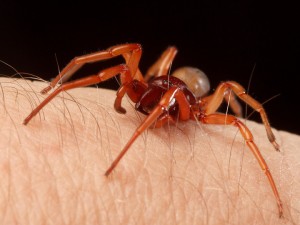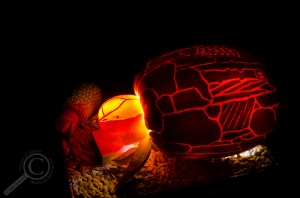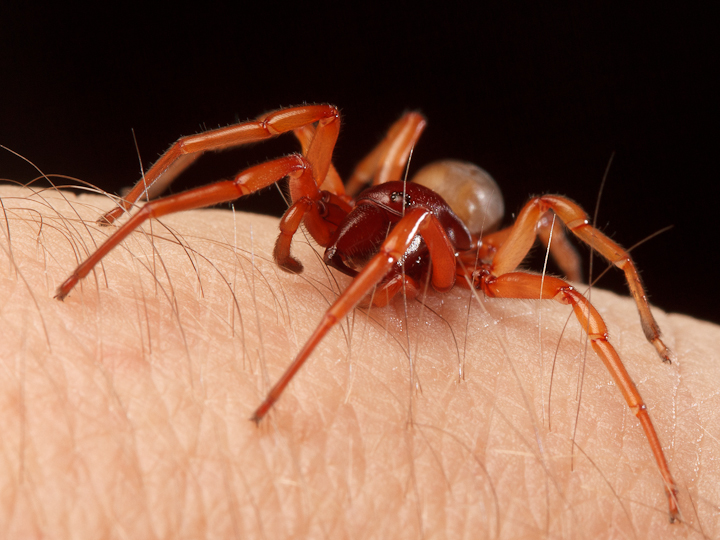by Kimberly Moynahan
Science in Society editor
“If all you have is a hammer, everything looks like a nail” – Abraham Maslow
Science oriented people — scientists, science communicators, and just plain enthusiasts – have a tendency to see the science in everything. A puddle of water becomes a microbiologist’s zoo. The twinkle of stars is an astronomer‘s trip back in time. Even the turning of leaves becomes a lesson in biochemistry.
When it comes to science bloggers, our effort to share science with wider audiences sometimes leads us to blog more tenuous scientific connections to events and other things in popular culture.
Nothing brings that home more than a holiday. Give us Valentine’s Day and we’ll blog on the science of chocolate and wine. Give us St. Patrick’s Day, and we’ll bring you a nanoscale shamrock. For Easter, in place of chocolate eggs, you’ll get the geology and history of Easter Island.
And give us Halloween and … well, take a look at what our bloggers have to say about our spookiest holiday –
- Here is biologist and photographer Sean McCann (@Ibycter) with the “Halloweeniest spider” on the west coast, Dysdera crocata.

Dysdera crocata (Photo by Sean McCann, used with permission).
- A guest post by Dr. Krista Patriquin on Dispatches From the Field (@fieldworkblog) dispels common myths about the much maligned Halloween icon, the bat. Patriquin also relates some spooky encounters she’s had in the field:
One night I was convinced a monster of gigantic proportions was coming to get me. I was shocked to learn that my monster was in fact a nighthawk performing its territorial display. For those of you who have never heard this display, listen to some of the “peents & boom sounds” at this link http://birds.audubon.org/birds/common-nighthawk.
- On his Biodiversity in Focus blog, entomologist and photographer, Morgan Jackson (@bioinfocus) showcases the creative carvings of the University of Guelph Insect Systematics Lab. Who else, but insect scientists would carve jumping spiders, caddisflies, and dung beetles on pumpkins?

A caddisfly larva pumpkin from the University of Guelph Insect Systematics Lab (Photo: Morgan Jackson, used with permission).
- As Dirke Stenke (@dirch3) of DNA Barcoding and One Bug A Day Blog illustrates, sometimes the link to science can be .. well .. a bit of a stretch: Jack-o-lantern Fish anyone?
- And speaking of stretches, how about the link between Halloween and stem cells? Over at The Signals Blog (@signalsblog), Stacey Johnson has this to say:
“Stem cells and Halloween don’t typically go together unless, like me, you’ve noticed the similarities between zombies and regenerative medicine.”
- On Sci/Why, L.E. Carmichael heads to San Antonio, the “most haunted city” in the USA, and returns with report on the science of ghost-busting.
- And where would Halloween be without pumpkins? Well, if it weren’t for the work of squash bees (Peponapis pruinosa), we might have to find that out the hard way. On the Nature Conservancy of Canada Land Lines blog (@NCC_CNC), pollination biologist, Susan Chan tells about the importance of this little pollinator to our great pumpkin patches.
“We owe the presence of the squash bee (Peponapis pruinosa) in Ontario to First Nations peoples: squash bees are thought to have migrated from Central America following the cultivation of squash. These bees, now widespread in southern Ontario, are quintessential agricultural bees because they forage for pollen only on plants in the genus Cucurbita, represented here entirely by a small group of agricultural crops including pumpkins, squashes, summer squashes and gourds.”
- Also on the topic of pumpkins, Amelia Buchanan (@ABuch078) on her blog Lab Bench to Park Bench, provides a natural history lesson on pumpkins and their place in our culture.
And finally, here is my own post on real-life frightening forest sounds, sights, and night creatures. I only wish I had known about Krista Patriquin’s nighthawk encounter. I’d have certainly added that spooky soundtrack – for the sake of science, of course!




